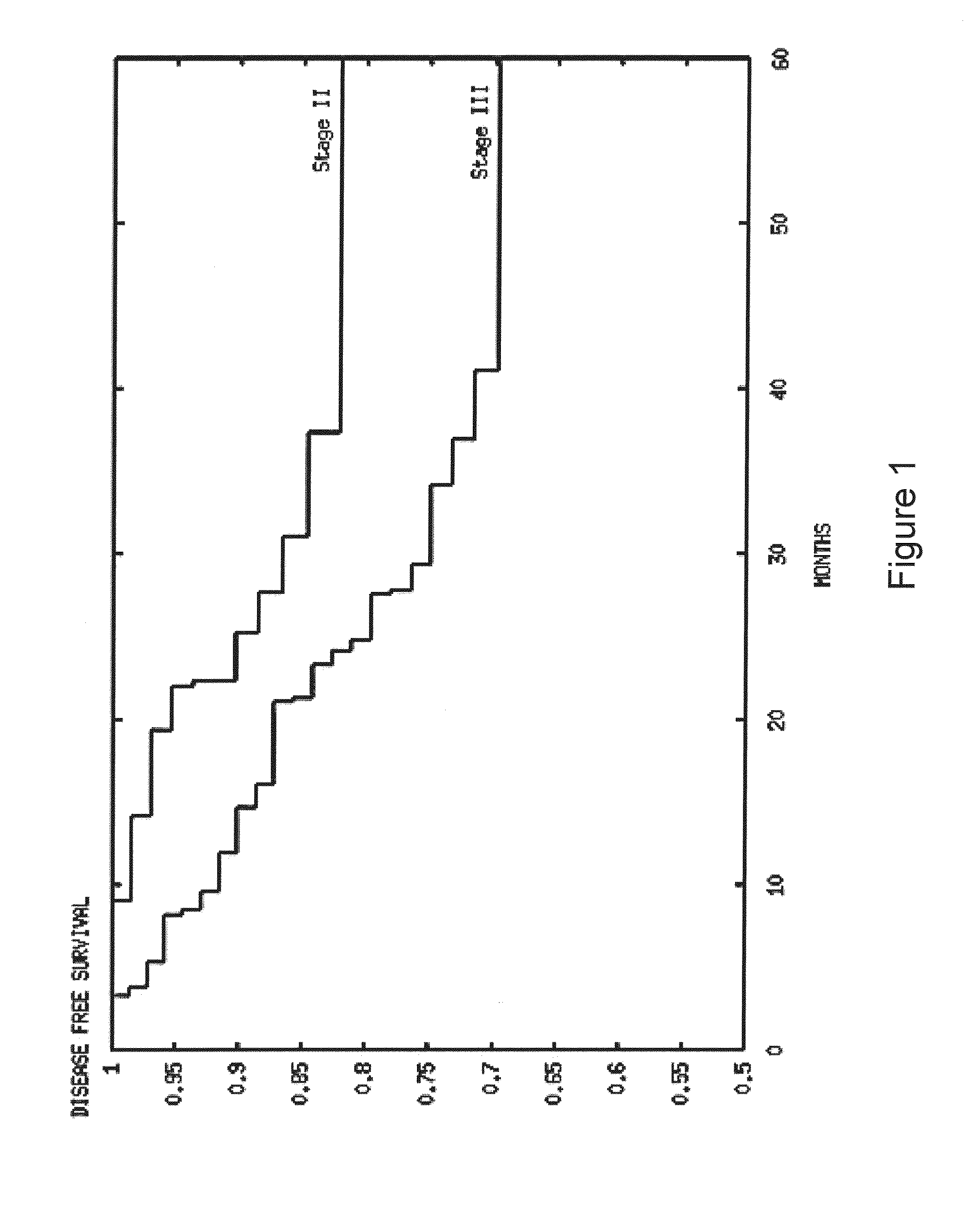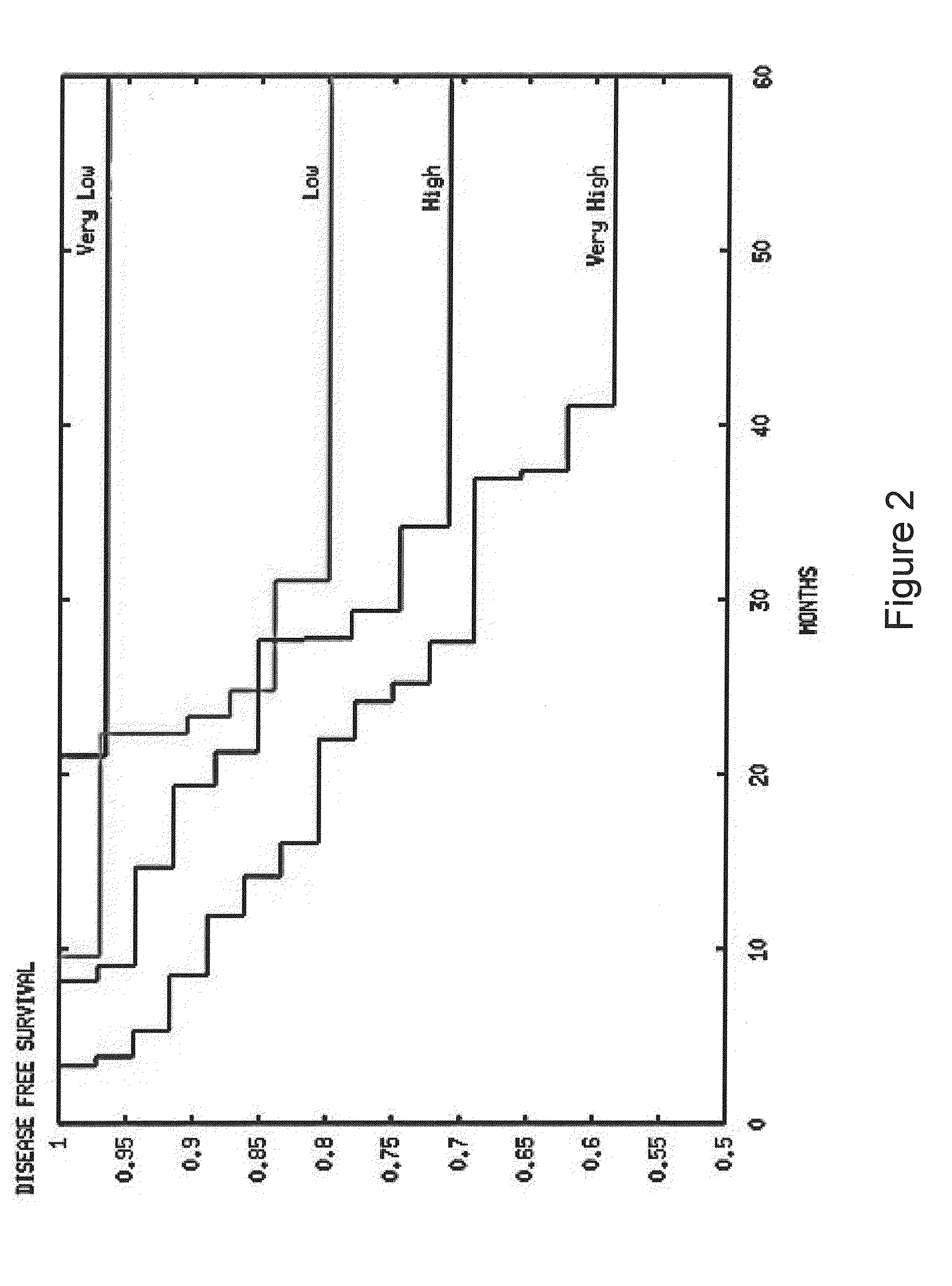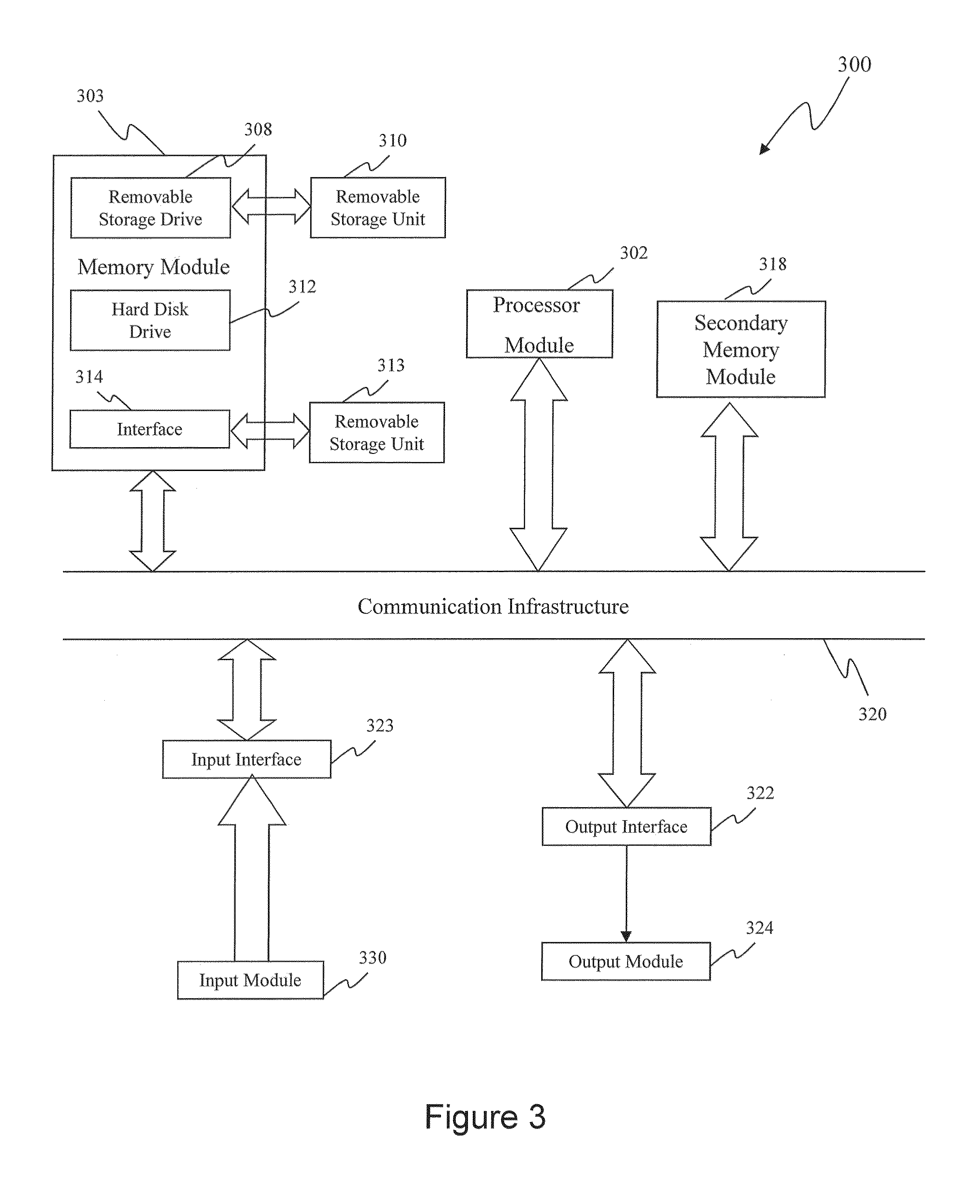Hypoxia-related gene signatures for cancer classification
a gene signature and cancer technology, applied in the field of molecular classification of cancer using hypoxia-related biomarkers, can solve the problems of many patients receiving improper cancer treatment, treatment severity vary, etc., and achieve the effect of increasing the expression of the plurality of test genes, poor, and low (or not increased) level of expression
- Summary
- Abstract
- Description
- Claims
- Application Information
AI Technical Summary
Benefits of technology
Problems solved by technology
Method used
Image
Examples
example 1
[0159]The prognostic value of the hypoxia signature in Table 2 was determined in colorectal cancer. Two public data sets of expression in colon cancer samples were examined.
[0160]The dataset GSE17538 comprises 28 stage I, 72 stage II, 76 stage III and 56 stage IV colorectal cancer patients. Available outcome measures were cancer recurrence and disease-specific survival. The prognostic value of hypoxia score was evaluated with Cox proportional hazard analysis with source of samples and stage as additional parameters. Both recurrence and disease-specific survival were used as outcome variable. Results for the univariate and multivariate analysis can be found below.
Cancer Recurrence in Stages I, II and III GSE17538VariableUnivariate p valueMultivariate p valueSource0.0010.02Stage0.0020.03Hypoxia score0.0000040.0002
Cancer Recurrence in Stage IIVariableUnivariate p valueMultivariate p valueSource0.040.9Hypoxia score0.00070.0009
Disease-Specific Survival in Stages I, II and III GSE17538Var...
example 2
[0164]The prognostic value of an expression signature based on hypoxia treated genes was tested in FFPE derived RNA samples colorectal adenocarcinomas patients.
[0165]Samples
[0166]FFPE sections from 278 stage I and II colorectal cancer patients were provided by the Istituto Nazionale del Tumori in Milan. All cancers had adenocarcinoma histology. Patients who had received neoadjuvant treatment, were diagnosed as familial CRC or had higher staging were excluded. Adjuvant treatment by chemo- or radiation therapy was permitted. 43% of patients received either chemotherapy and / or radiation therapy. Outcome variables provided were progression-free survival (PFS) and overall survival (OS). Recurrence and death rates in the full cohort were 13.5% and 15%, respectively. A significant number of deaths (57%) were not preceded by disease recurrence. A third outcome variable, death with disease (DSS) was defined as death with disease recurrence to approximate disease-specific survival. For DSS pa...
example 3
[0178]The prognostic value of an expression signature based on hypoxia treated genes was tested in FFPE derived RNA samples from lung adenocarcinoma patients.
Samples
[0179]136 resectable, non-small cell lung cancer patients were selected from a cohort at MDA Cancer Center with at least five year follow-up period. The patients had be diagnosed with pathological stage IA, IB, IIA, or IIB and have adenocarcinoma histology. Patients who had received neoadjuvant treatment were excluded. Adjuvant treatment by chemo- or radiation therapy was permitted. Outcome variables included disease-free recurrence (DFS), overall survival (OS) and disease-specific survival (DSS). DSS was defined as death preceded by a recurrence event. Deaths not preceded by disease recurrence were censored at the time of death.
Genes
[0180]HRGs were selected from a list of genes upregulated in multiple microarray data sets measuring expression in cell culture cells as a function of oxygen pressure. From a total of 42 hyp...
PUM
| Property | Measurement | Unit |
|---|---|---|
| weight | aaaaa | aaaaa |
| total weight | aaaaa | aaaaa |
| weight coefficient | aaaaa | aaaaa |
Abstract
Description
Claims
Application Information
 Login to View More
Login to View More - R&D
- Intellectual Property
- Life Sciences
- Materials
- Tech Scout
- Unparalleled Data Quality
- Higher Quality Content
- 60% Fewer Hallucinations
Browse by: Latest US Patents, China's latest patents, Technical Efficacy Thesaurus, Application Domain, Technology Topic, Popular Technical Reports.
© 2025 PatSnap. All rights reserved.Legal|Privacy policy|Modern Slavery Act Transparency Statement|Sitemap|About US| Contact US: help@patsnap.com



